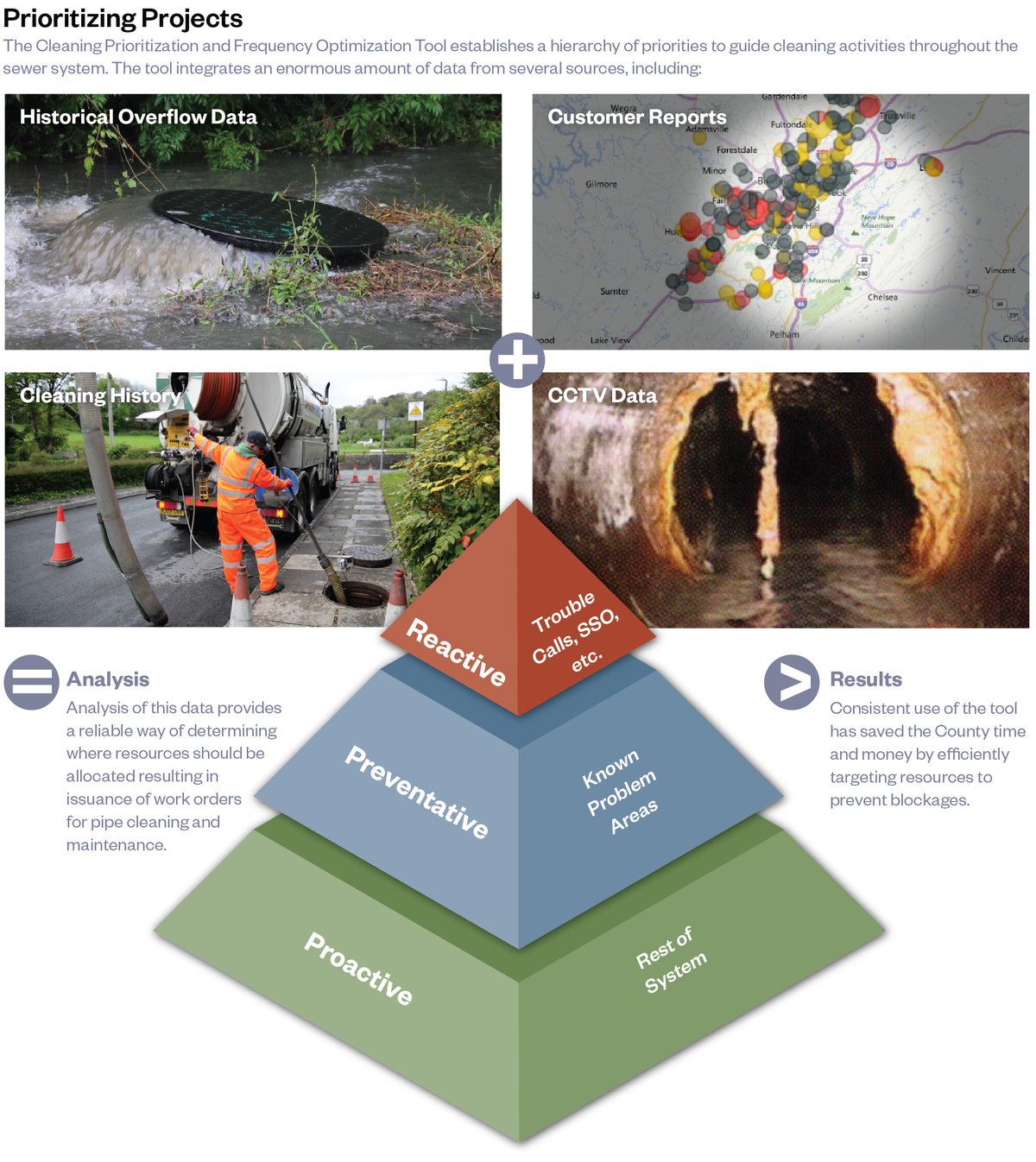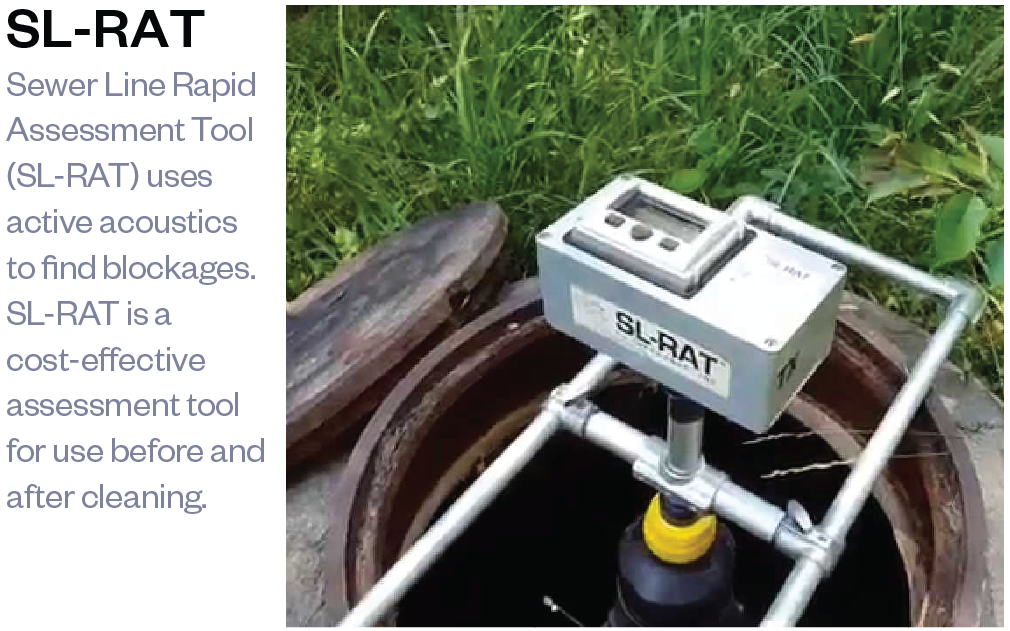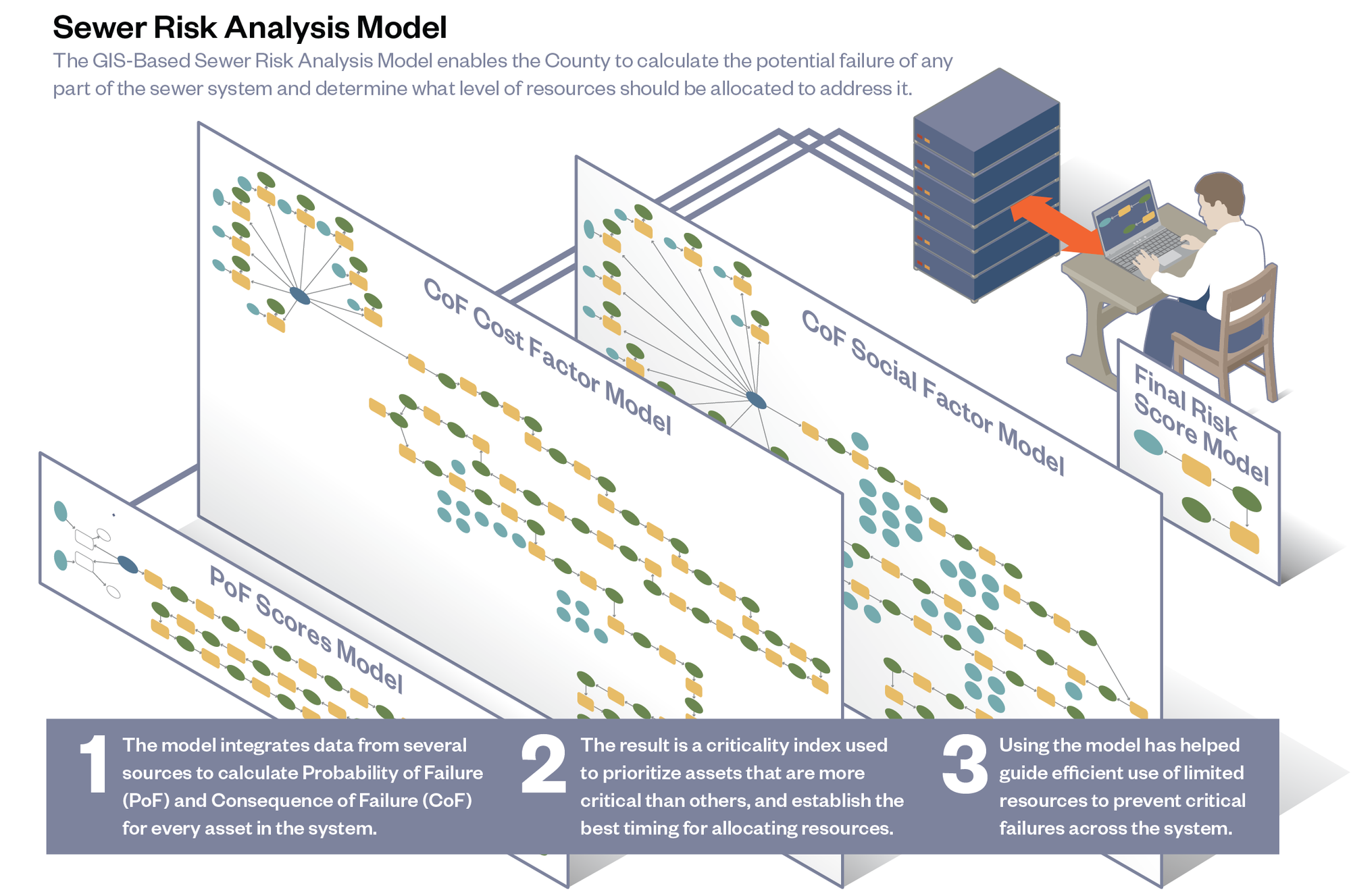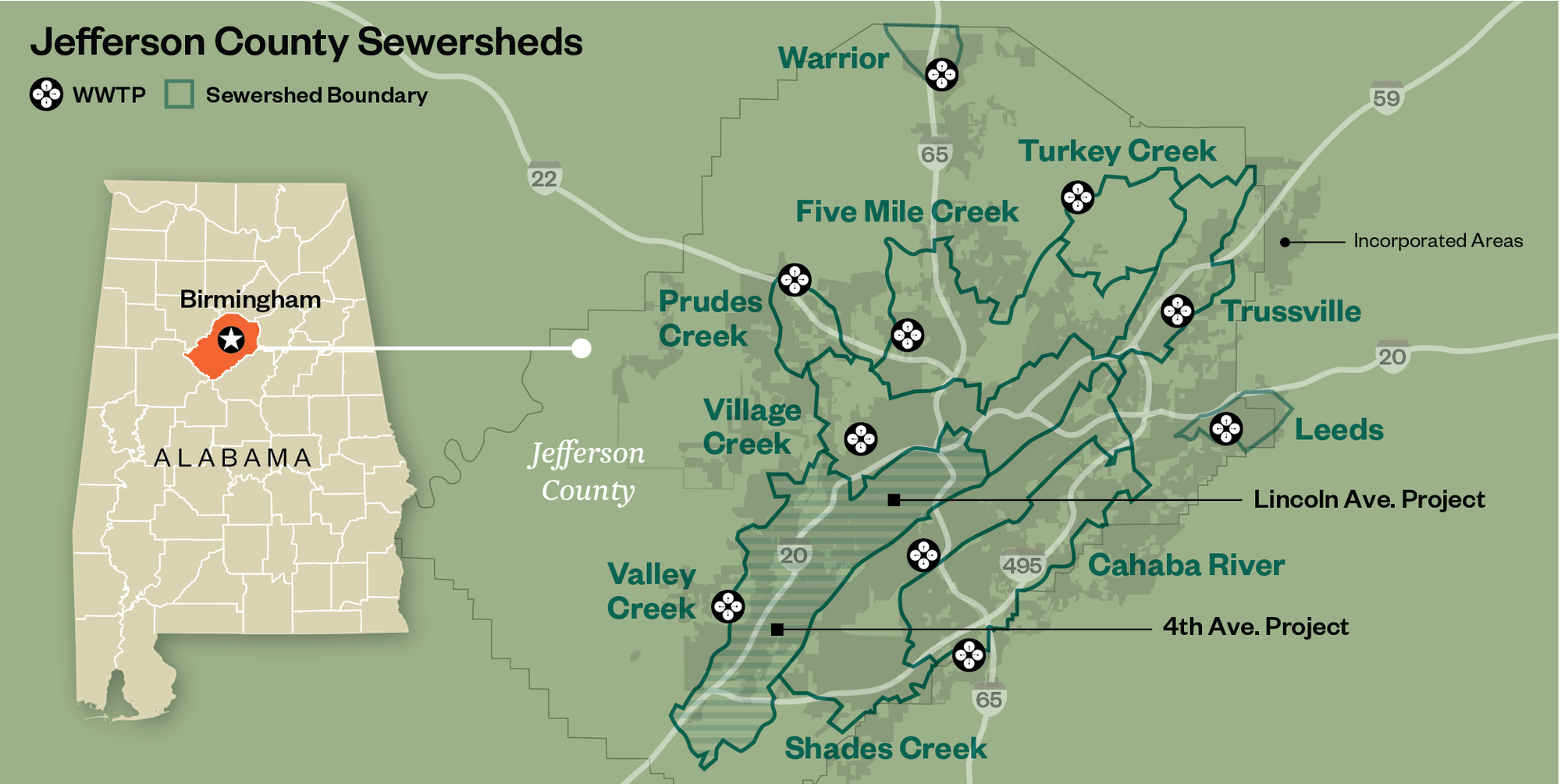Successfully Implementing A Collection System Asset Management Program

Jefferson County Environmental Services Department (JCESD) in Birmingham, AL, serves a population of approximately 478,000 people and owns and operates approximately 3,070 miles of sanitary sewer lines, 177 pump stations, and 81,702 manholes as part of its sewer collection system. Before 1996, however, the County only owned and operated 570 miles of trunk sewers and 33 pump stations, with all other assets owned and operated by 21 different municipalities. A 1996 Consent Decree required the County to take over all of these disparate systems and to eliminate overflows, placing an enormous burden on County staff and resources.
Many of the acquired systems had not been maintained well and were not constructed to proper standards. Within the 3,100 miles of sewer collection system, JCESD experienced significant and frequent blockages due to grease, roots, rags, and various debris in the sewer lines. These blockages caused and exacerbated sanitary sewer overflows (SSOs) in the system and resulted in home backups. In order to maximize the productivity and effectiveness of County crews until the needs of the integrated system could be determined and implemented, it was critical that the County develop a system to prioritize areas to clean to proactively prevent blockages.
Asset Management Approach
To get the most out of its investments and to prioritize repairs throughout the system, the County decided to implement a customized asset management approach. This approach identifies priority rehab and repair needs, establishes a cleaning and maintenance schedule for the entire system, and provides a method to address current and future compliance issues established by Federal and State regulators.
Using knowledge gained from the asset management program, the County developed a three-year CIP that includes directing condition assessment activities, scoping and procurement of engineering services, and schedule delivery.
Related Topics:

The Program Toolbox
The asset management program relies on a suite of customized tools to accomplish all of these challenging objectives. GIS-based risk analysis tools guide decisions about which parts of the system are in most urgent need of repairs, reducing the number of breaks and SSOs. When imminent repair is not needed, CCTV inspection equipment and software provide detailed analyses for focusing rehab efforts. Specialized software for manhole inspections guide efforts to assess more than 81,000 manholes across the system and determine repairs.

Cleaning frequency prioritization and optimization software helps direct efforts to reduce grease buildup and improve system maintenance. Other modeling and risk assessment software packages address a multitude of decisions that must be made daily to ensure that repairs occur at the optimal time and rehab is completed when needed.

Prioritized Repairs
The County comprises multiple watersheds, with the Valley Creek watershed being the largest and most populous. In the Valley Creek watershed, SSOs had long been a significant quality-of-life burden on local residents. Therefore, the primary focus of the early stages of the asset management program was to fortify the infrastructure in this watershed. Two particular sites within Valley Creek had among the most regular SSOs and were prioritized for repair at the onset of the program.

The 4th Avenue sewer-replacement project in Bessemer increased the capacity of an undersized sewer that overflowed after heavy rains. The completion of this project eliminated SSOs from spilling into Valley Creek several times a year. The Lincoln Avenue sewer-replacement project in Birmingham’s West End neighborhood eliminated sewer segments that were difficult to maintain, increased the capacity of a sewer, and prevented SSOs from spilling into Valley Creek.
Tracking Program Performance
To track overall program performance, Jefferson County now uses Microsoft Power Business Intelligence (Power BI) to integrate data characterizing an enormous number of assets. Monthly program reports, accessed through Power BI, track key performance indicators and ensure effective implementation of the CIP and collection system performance.
County staff can access and interpret the dashboards without the need for hiring additional technical staff or consultants. The resulting analyses enable the County to allocate limited resources where they are most needed and most effective. The Power BI reporting framework is providing a transparent and defensible perspective on the sustainability and cost effectiveness of the asset management program. This perspective empowers County staff with new insights on how to best to regulate spending and prioritize projects that will decrease the number of SSOs and home backups. A data management plan keeps these dashboards effective, updated, and active in the long term.
To date, the asset management plan has reduced SSOs and resulted in the repair/replacement of 15.7 miles of sewer and the rehabilitation of 14.7 miles of sewer. As of the end of 2017, 24 asset management projects were completed or were under construction, with another 21 projects under design or awaiting bidding.











